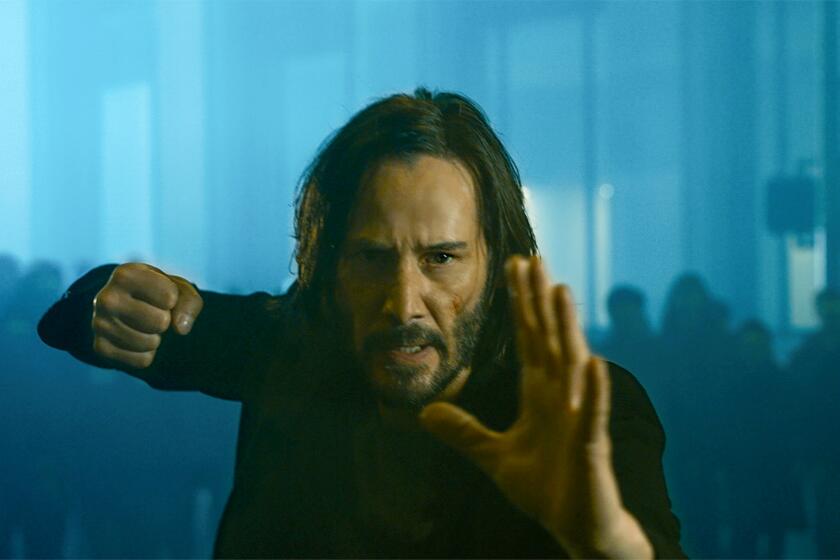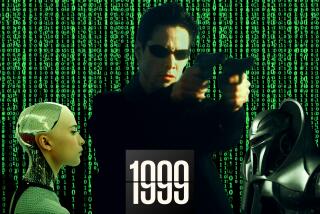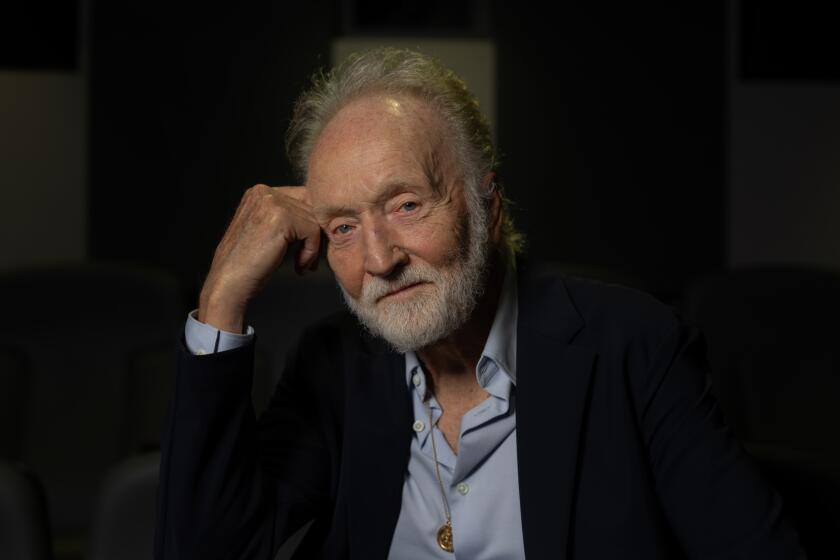Five questions to help you figure out if you’ll love ‘The Matrix Resurrections’
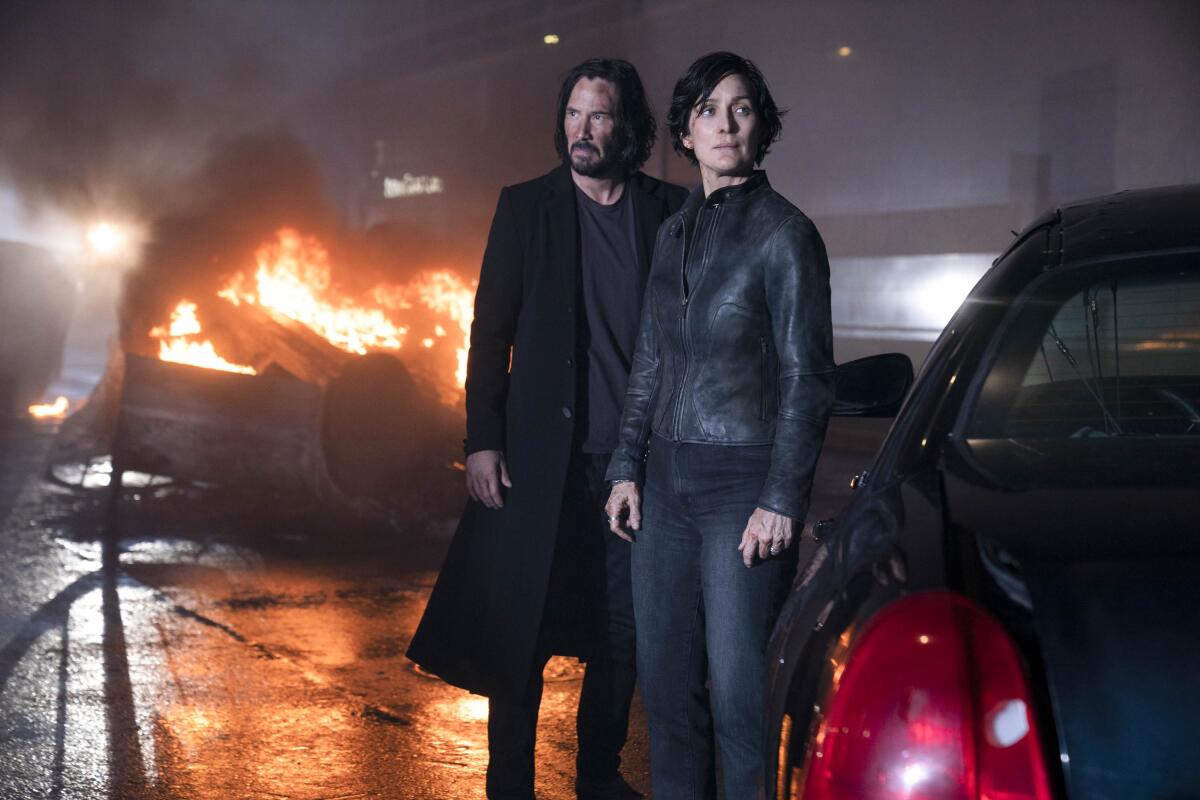
As a wise Oracle once said, “Everything that has a beginning has an end.” Well, maybe she meant everything but the “Matrix” movies. Four films, one “Animatrix,” video games and two decades of enormous cultural influence later, the franchise borne of Lana and Lilly Wachowski’s 1999 sci-fi opus has rebooted its own ending yet again — and its latest entry, featuring the return of Neo, Trinity, big action and even bigger new ideas, is arguably its most grandiose and divisive entry yet.
Released Dec. 22 in the age of Omicron, in theaters and streaming on HBO Max, “The Matrix Resurrections” is an enticing work of nostalgia for those whose minds exploded watching Keanu Reeves’ hacker hero fall down the rabbit hole only to wake up in a grimy machine dystopia as Neo, the fated cyberpunk savior of humanity, in the original “The Matrix.” Next came 2003’s well-received “The Matrix Reloaded” (aka the one with the rave scene) and 2003’s not-so-well-received “The Matrix Revolutions” (the one with no rave scene — you do the math), pushing the franchise’s worldwide grosses over $1.6 billion.
Years passed before Warner Bros. confirmed that a Wachowski-led continuation was in the works. Now Lana returns to solo-direct , co-scripting with David Mitchell and Aleksander Hemon a fourquel that peers into the looking glass, all the way around and back upon itself, with the help of faces both familiar (Keanu! Carrie-Anne Moss! Jada Pinkett-Smith!) and new (Jessica Henwick! Yahya Abdul-Mateen II! Jonathan Groff!) in a chapter set 60 years after the events of the third film.
Lana Wachowski directs Keanu Reeves and Carrie-Anne Moss in ‘The Matrix Resurrections,’ the fourth installment of the sci-fi/action franchise.
But this “Matrix” is not like the old “Matrix,” and that’s very much by design. At once sequel, reboot, and self-aware critique of the previous films and their legacy, “Resurrections” is sparking starkly divided reactions and cinephile debate. Will you love the Nü “Matrix?” Times reporters Tracy Brown and Jen Yamato are here to help.
Warning: Spoilers for “The Matrix Resurrections” follow.
1. Do you like Neil Patrick Harris a whole lot?
JEN YAMATO: If the answer is “give me all the Neil Patrick Harris,” you’re in luck. As “Resurrections” opens, Neo is living once again as Thomas Anderson. This time he’s an uneasily successful San Francisco video game developer whose greatest creation, a hit simulation video game, is called — you guessed it — The Matrix. His memories from the first movie are video game cut scenes that fans know by heart.
Emmy winner Harris makes his “Matrix” debut as one of the film’s new characters, The Analyst, whose therapy sessions and prescription blue pills keep Anderson’s dream life from spilling over into his reality, and his grip on his sanity firm. Or do they?
Long exposition and new techy lore stuffed into stretches of talky, cerebral scenes with a runtime that’s already pushing 2 1/2 hours isn’t for every moviegoer. Once The Analyst’s true motives are revealed, there’s not much even the charismatic NPH can do to make the narrative repetition feel all that fresh. But much of the mirroring seeded throughout “Resurrections” does work, including the almost-exact opening sequence re-creation of Trinity’s fight with the Agents and two strokes of subtle but clever casting: Trinity’s virtual husband, Chad, played by Reeves’ original Neo stunt double (turned “John Wick” director) Chad Stahelski, and the guy Neo now looks like inside the Matrix — who’s played by Moss’ real husband, actor Steven Roy.
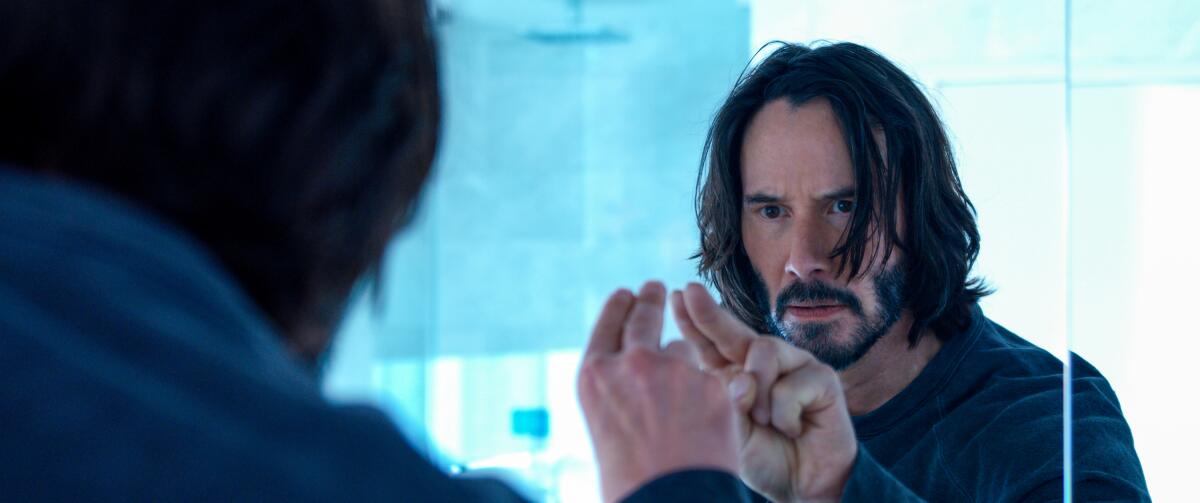
2. How about Jessica Henwick?
TRACY BROWN: This is a bit of a trick question. Even if the scene-stealing Jessica Henwick hadn’t already left an impression on you from her roles in “Game of Thrones” and “Star Wars: The Force Awakens,” or as the only good part of Netflix/Marvel’s otherwise cringey “Iron Fist,” you’ll be a true believer after “The Matrix Resurrections.”
Another newcomer to the franchise, Henwick is electric as the chic gunslinger Bugs, who serves as both the audience and Neo’s new white rabbit guide back into the worlds of “The Matrix.” Bugs is also the heir apparent of the spirit of the original Morpheus, her unshakable belief in Neo driving her as she leads her crew on missions that aren’t always approved by the higher-ups in her chain of command. Henwick’s portrayal is this heady blend of new energy and déjà vu that’s crucial in making a reboot/remix/reimagining of a dormant franchise work.
No matter how you feel coming out of “Resurrections,” you’ll probably agree the latter half of the movie could’ve used more Bugs, and that Henwick should be cast in everything.
3: Hmm. Did you love or hate the sequels?
BROWN: If what you loved most about the sequels were the stylized fight sequences, the bombastic battles between machines and humans in mechanical armor, the cyberpunk real world and its underground raves or Laurence Fishburne and Hugo Weaving, I have some bad news for you: “Resurrections” doesn’t have them. Well, as for the fight scenes, it’s more “doesn’t have enough.”
But if what appealed to you most about the sequels were its philosophical ambitions, its willingness to challenge its own mythology and meaning or Neo and Trinity’s relationship, there’s a better chance “Resurrections” is up your alley.
(And if you thought “Reloaded” and “Revolutions” were both massive disappointments, you’re probably better off reflecting on whether any “Matrix” sequel is right for you.)
“Resurrections” is an action film, and as such, does feature action scenes — but these scenes serve a different purpose here than in the previous installments. So although Neo may still know kung fu, if you’re looking for fight choreography that lives up to the artistry displayed in earlier installments, you’re in for a letdown. That said, I enjoyed the fight scene on the train.
But “Resurrections” feels more deliberate in its message than its predecessors — leaving less room to warp its meaning out of context — so your enjoyment of the film will come down to how much that message resonates.
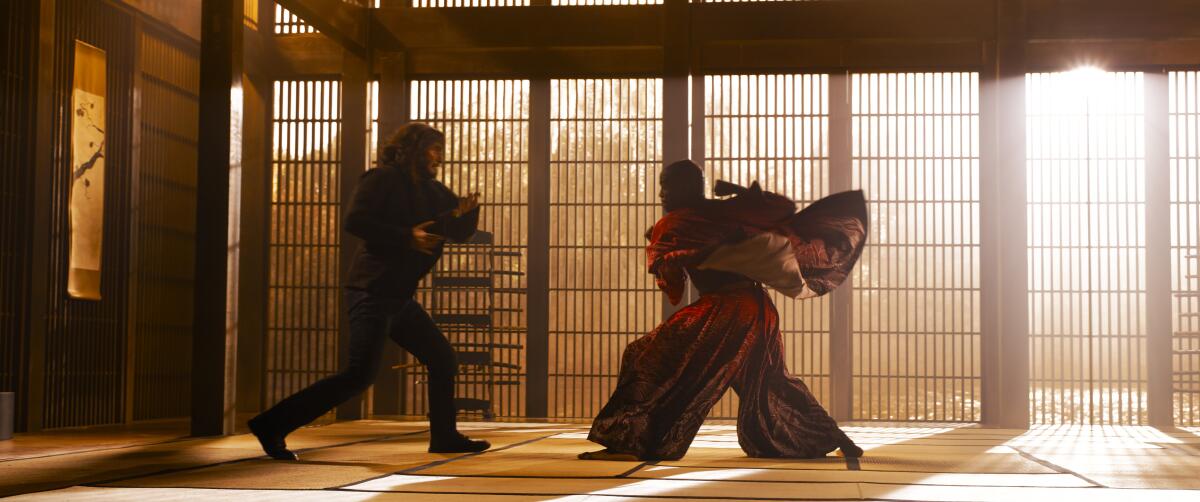
4: Do you believe love conquers all?
BROWN: The crux of how you receive “Resurrections” probably will be determined by how you feel about its hopeful outlook about the power of love.
Neo and Trinity’s relationship has always been an important part of “The Matrix” films — in a story about the significance of choice, they both have always chosen each other. “Resurrections” makes it clear that “The Matrix,” at its core, is a love story. And true love wins.
“Resurrections” boldly posits that with the power of true love, you will choose the facts of a bleak reality over a world of comfortable lies. In fact, it’s love that lets you see the cracks in the fiction in the first place.
The film also cements Trinity’s significance in “The Matrix’s” mythology of how humanity is saved. Neo isn’t the Chosen One who brought peace between man and the machines on his own — it was Neo and Trinity’s love that saved the world and it has the power to continue changing it.
5: Would all Hollywood blockbusters be better if they gained sentience and/or self-awareness?
YAMATO: “Resurrections” ends on a broad note that holds the door open for the next sequel to fly right on in. But as other Hollywood blockbuster IPs navel-gaze into the past, whether via nostalgia or multiverses (see: “Ghostbusters: Afterlife,” WB’s own “Space Jam: A New Legacy” and Marvel’s “Spider-Man: No Way Home”), Wachowski has created a self-aware sequel that, in the very least, critiques its own existence while gladly taking your ticket/streaming money.
Given the existential questioning that has always been at the core of “The Matrix,” the Hollywood machine becoming sentient might seem like a bold next step. It’s really just the natural one. Within the virtual world of “Resurrections” the point is relentlessly satirized when Thomas, trapped by a success of his own making, is forced by his business partner and parent company — Warner Bros., naturally — to churn out a new sequel to his game-changing hit video game. Armed with focus group data, a roomful of marketing-type millennials argue over the meaning of The Matrix and why it was such a cultural juggernaut to begin with.
There’s comfort in the idea of resurrection, of life beyond death, of the possibility of rebirth — and the notion that a story never has to end. That we can return to well-worn narratives and reshape them, discovering new meaning when we’ve moved beyond the old ones. At times “Resurrections” even resembles the meta-narratives of “Hook” or “Wes Craven’s New Nightmare” more than it does other big-budget Hollywood sequels. It’s a sequel that knows that people come to “The Matrix” with wildly different expectations — the escapism, the existentialism, goth superpowered Keanu defying the laws of physics. Those willing to embrace it as an evolving work are destined to leave more satisfied with how it gets to its new end.
More to Read
Only good movies
Get the Indie Focus newsletter, Mark Olsen's weekly guide to the world of cinema.
You may occasionally receive promotional content from the Los Angeles Times.
